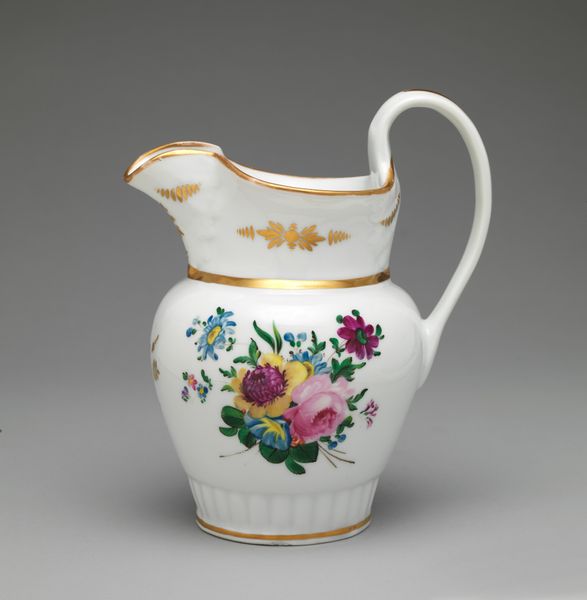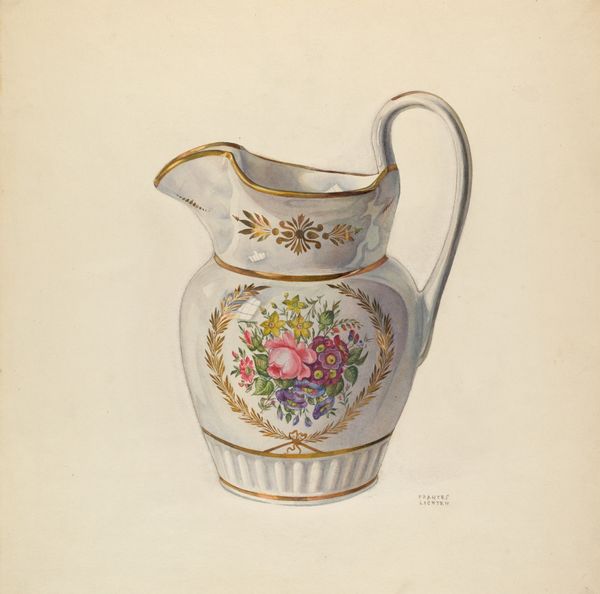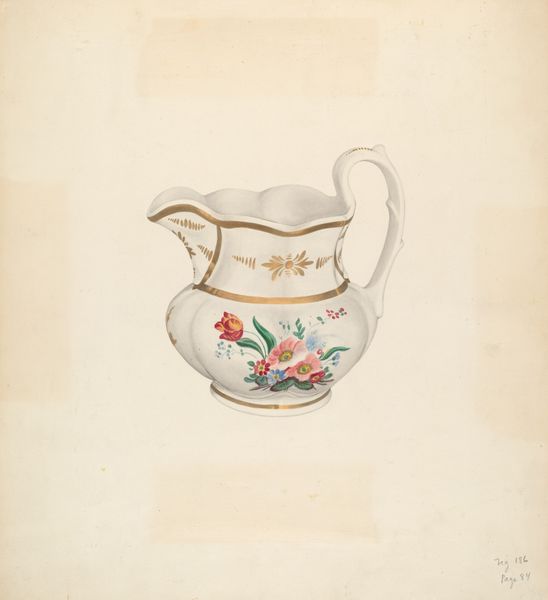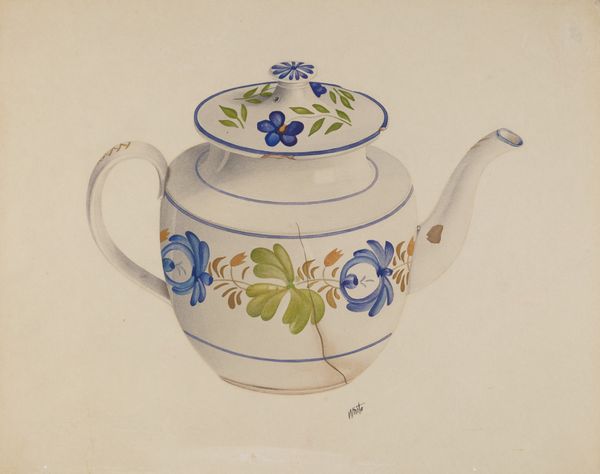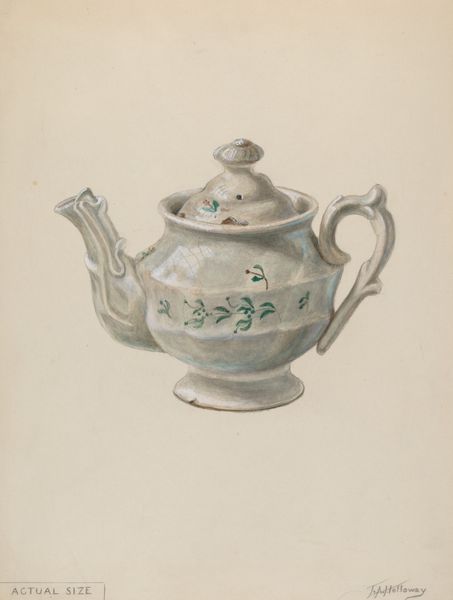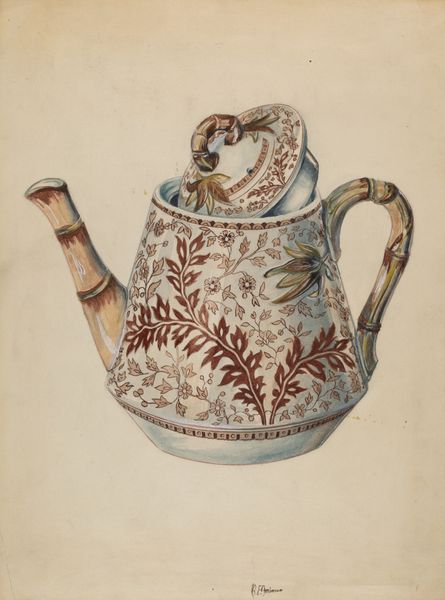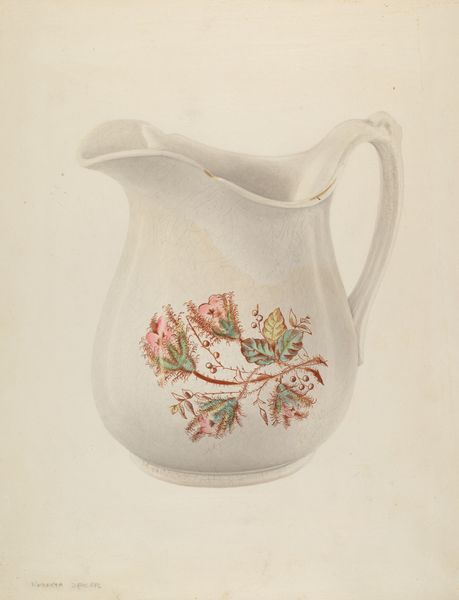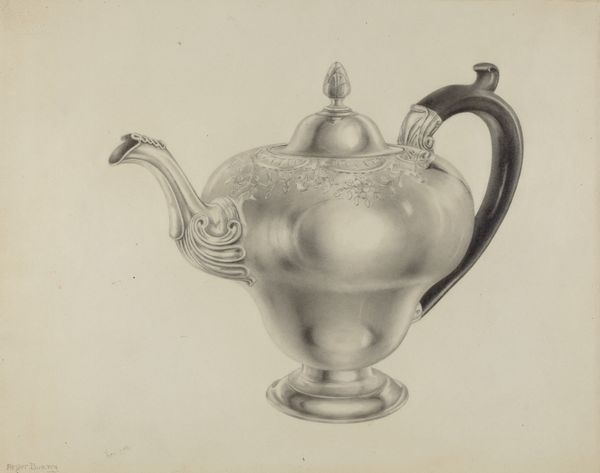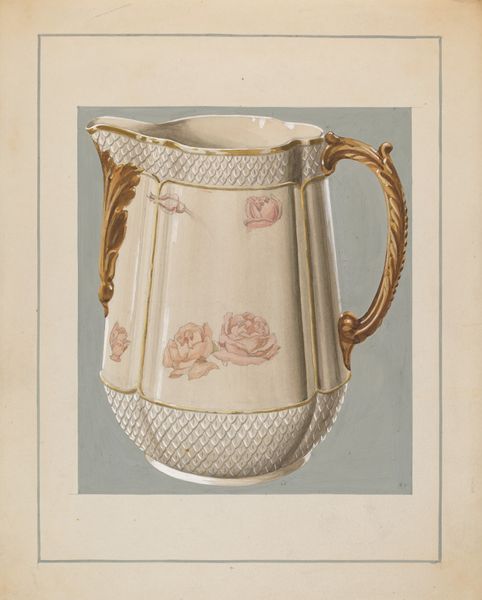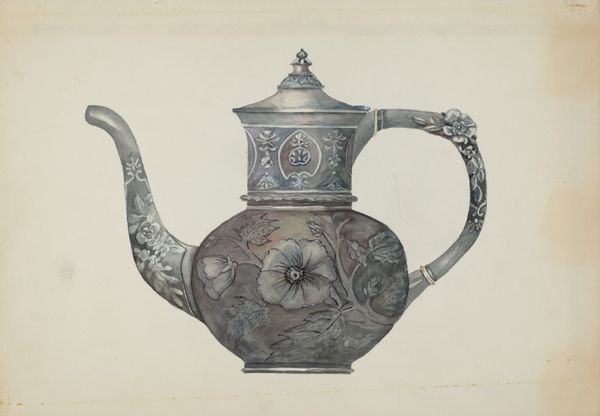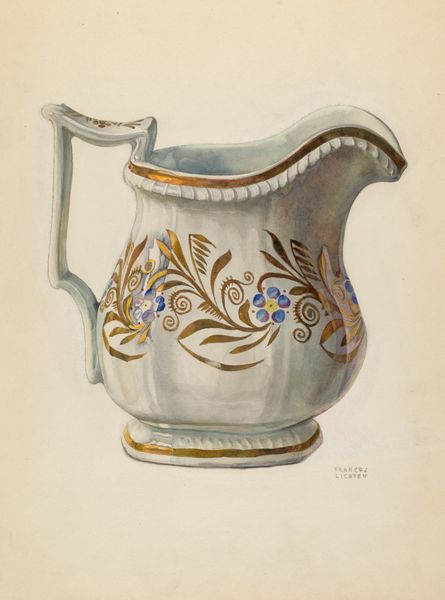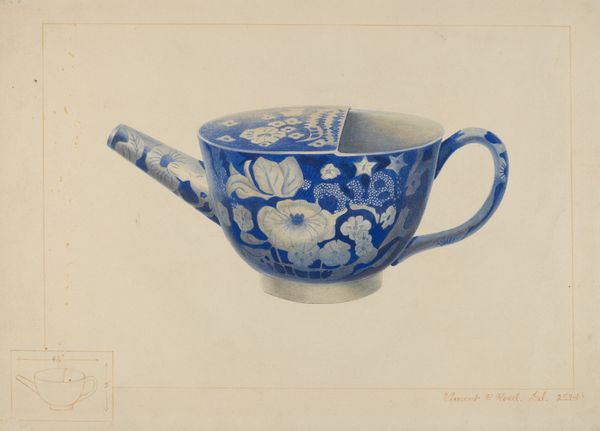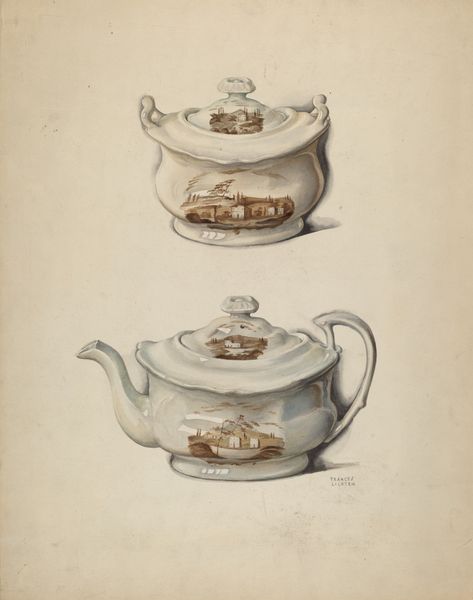
Dimensions: Overall (teapot .2a, confirmed): 3 1/2 × 6 3/4 × 4 in. (8.9 × 17.1 × 10.2 cm); Overall (lid .2b, confirmed): 3/4 × 1 7/8 × 1 7/8 in. (1.9 × 4.8 × 4.8 cm)
Copyright: Public Domain
This porcelain teapot was made by the Höchst Manufactory, which operated from 1746 to 1796 in Germany. This delicate object reflects the social and cultural values of its time. The rise of porcelain manufactories coincided with the expansion of European colonialism, as the demand for luxury goods increased among the aristocracy. This teapot, with its whimsical bird and fowl motifs, speaks to a culture of leisure and refinement reserved for the elite. At the time it was made, tea consumption was linked to ideas of femininity and domesticity. Objects like this teapot were central to rituals of social gatherings and polite conversation in bourgeois society. The artist reworks traditional representations of pastoral life, suggesting a romanticized and idealized view of nature. Note how the scenes are rendered with a soft palette, evoking a sense of serenity and harmony. It is a reminder of how everyday objects can carry complex layers of meaning, reflecting societal values, gender roles, and the politics of taste.
Comments
No comments
Be the first to comment and join the conversation on the ultimate creative platform.
